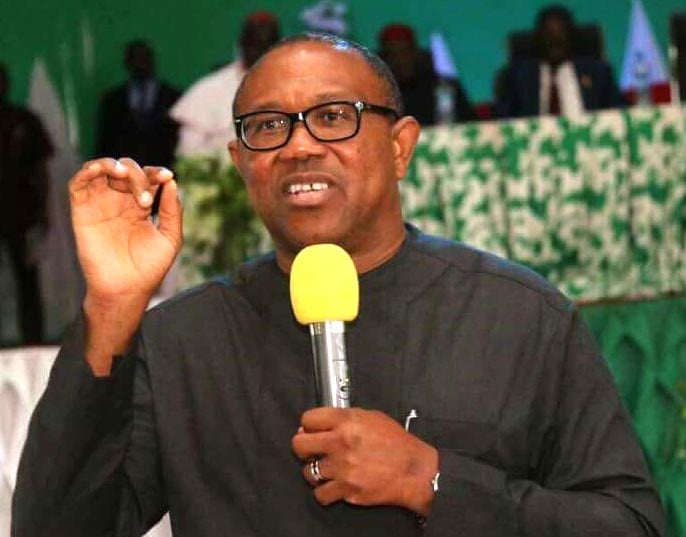Photo: WHO
The World Health Organisation (WHO), on Wednesday, endorsed the widespread use of the RTS,S/AS01 (RTS,S) malaria vaccine.
The development comes amid research efforts to address malaria, which remains one of the leading causes of child mortality in sub-Saharan Africa, with over 250,000 deaths reported yearly.
The recommendation followed a two-year vaccination programme, which involved more than 800,000 children in Ghana, Kenya and Malawi.
Here are 10 things to know about the groundbreaking vaccine.
Advertisement
Who can take the vaccine?
The vaccine is recommended for children from five months of age to around 18 months, close to their second birthday.
In the vaccination programme, Malawi first offered the vaccine to children aged five months, while in Ghana and Kenya, the vaccine was first offered to persons at six months of age.
Advertisement
What is the dosage?
The vaccine is recommended to be taken in four doses. The first three doses are given one month apart at five, six and seven months old, and then a final dose is given at around 18 months.
How effective is the vaccine?
According to the phase three trial conducted between 2009 and 2014, “among children aged 5–17 months who received 4 doses of RTS,S, the vaccine prevented approximately 4 in 10 (39%) cases of malaria over 4 years of follow-up, and about 3 in 10 (29%) cases of severe malaria, with significant reductions also seen in overall hospital admissions as well as in admissions due to malaria or severe anaemia”.
Advertisement
The vaccine was also found to offer a 29 percent reduction on the need for blood transfusions, which are required to treat life-threatening malarial anaemia.
The phase three trial involved 15,000 children in seven sub-Saharan African countries — Burkina Faso, Gabon, Ghana, Kenya, Malawi, Mozambique, and Tanzania.
Is it safe?
According to WHO, the vaccine has a favourable safety profile — after more than 2.3 million doses of the vaccine have been administered in three African countries.
Advertisement
Also, the European Medicines Agency had issued a scientific opinion on the vaccine in July 2015, concluding that the benefits outweigh the risks.
Are there side effects?
Advertisement
The WHO says the side effects of the vaccine include pain and swelling at the injection site, and fever. But these side effects are similar to reactions observed with other vaccines administered to children.
The vaccine is also associated with an increased risk of febrile seizures — a seizure caused by fever — within seven days of the administration, but according to the phase three trial, children who developed these seizures recovered fully.
Advertisement
How does the vaccine work?
RTS,S aims to trigger the immune system to defend against the first stages when the plasmodium falciparum malaria parasite enters the human host’s bloodstream through a mosquito bite and infects liver cells.
Advertisement
The vaccine is designed to prevent the parasite from infecting the liver, where it can mature, multiply, re-enter the bloodstream, and infect red blood cells, which can lead to disease symptoms.
How long did it take to make the vaccine?
The vaccine is the result of over 30 years of research led by GlaxoSmithKline (GSK), with PATH, a non-governmental health agency and other partners.
Does the vaccine work against all types of malaria parasites?
There are different malaria parasites in existence. The RTS,S specifically targets plasmodium falciparum parasite, which is the one that is most common in Africa.
What makes the RTS,S vaccine different from other vaccines under development?
According to WHO, the RTS,S malaria vaccine is the first vaccine that has demonstrated it can significantly reduce malaria in children across Africa, and also cut back on fatality counts.
Speaking on the vaccine, Tedros Ghebreyesus, WHO DG, said “it significantly reduces life-threatening severe malaria, and we estimate it to be highly cost-effective”.
How was the making of the vaccine funded?
The Bill & Melinda Gates Foundation provided funding for late-stage development of RTS,S between 2001 and 2015. Two notable donations within this period include $107.6 million to the PATH malaria vaccine initiative (MVI) to work with GlaxoSmithKline Biologicals and African investigators to complete testing and apply for licensure of the most advanced malaria vaccine candidate in 2005, and $168.7 million to PATH for its malaria vaccine initiative in 2008.
1 comments







Very educated